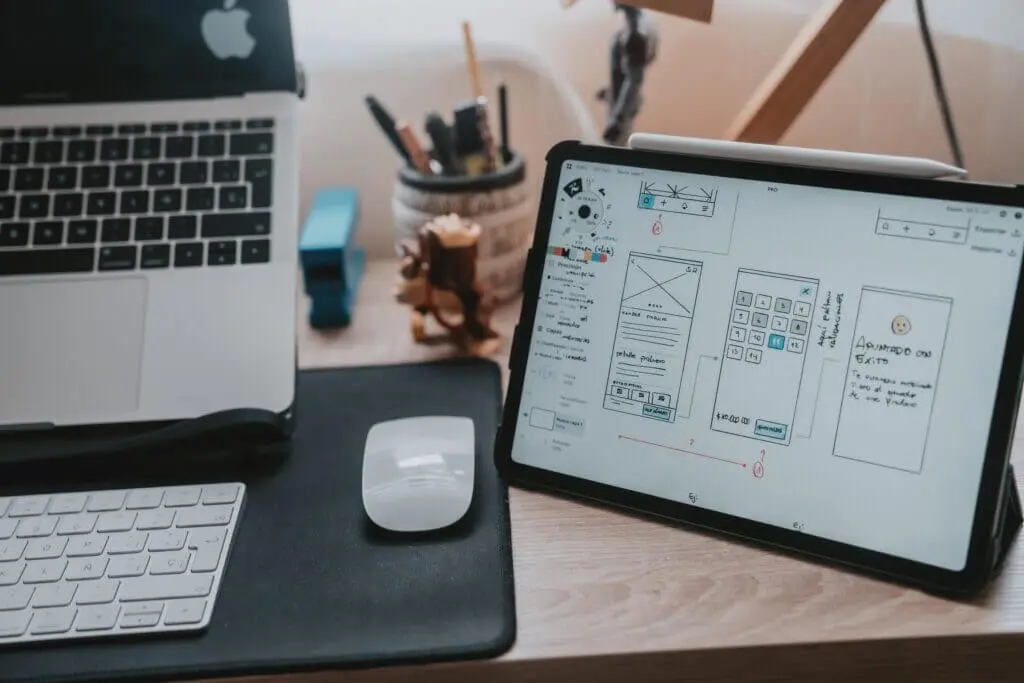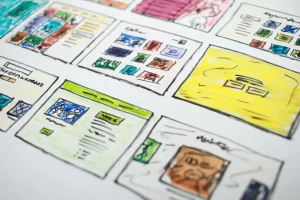In the world of web technology, design is a complex and frequently encountered term. An important aspect in developing a successful website is ensuring a pleasant and efficient experience for users. In this environment, two key terms emerge as particularly important: UI (User Interface) and UX (User Experience). In this article, we will explore the differences and similarities between UI and UX, as well as their significance in creating an optimized website.
What do UI and UX mean?
UI and UX are two essential components of web design, each with its specific role:
- User Interface (UI) refers to the visual aspect of a website. It involves graphic design, interactive elements, the overall look of pages, and how users interact with them. UI elements include buttons, menus, search bars, animations, and other visual components.
- User Experience (UX) focuses on how users interact with the website. UX involves optimizing the user journey on the site, ease of navigation, accessibility, loading times, and overall user satisfaction.
Differences between UI and UX
Although often used together, UI and UX represent distinct concepts. Their main point of divergence lies in their focus:
- UI (User Interface) focuses on the aesthetic aspect and interactive elements of the website. UI designers create a pleasant and attractive design, using colors, fonts, images, and other visual elements to capture users’ attention. Essentially, UI is concerned with how the website looks.
- UX (User Experience) concentrates on user satisfaction during interactions with the website. UX experts analyze user behavior, create user profiles, conduct usability tests, and develop strategies to enhance the overall user experience. Essentially, UX is concerned with how the user feels and behaves on the site.
The Importance of Each Aspect in Web Design
Both UI and UX are crucial elements in achieving a successful website. Neglecting either of these components can lead to a disappointing user experience. Here’s the importance of each aspect:
- Importance of UI: UI grabs users’ attention and keeps them engaged on the site. An attractive visual design can encourage users to explore more content and spend more time on pages. However, an overly complex or confusing UI can negatively impact the user experience and lead to site abandonment.
- Importance of UX: A positive user experience is essential for user retention and business growth. A website with easy navigation and fast loading times will prompt users to return repeatedly and recommend the site to other potential users. An optimized UX also improves conversion rates and enhances users’ trust in the respective brand.
In conclusion, UI and UX represent two distinct and essential aspects of web design. UI refers to the visual and interactive aspects of the website, while UX focuses on user experience and satisfaction. Both aspects are equally important in creating an efficient and successful website. By combining an attractive design with a pleasant user experience, the website can attract and retain the audience, encouraging users to return consistently.
Creating a balance between UI and UX requires close collaboration between visual designers and user experience experts. Together, they can build a website that provides a memorable and enjoyable experience for users, thus strengthening the brand’s presence and reputation in the online environment.
Discover the 5 key elements of creating a strong brand identity through web design!
Follow us on social media:
Instagram: https://www.instagram.com/securemenow/
Facebook: https://www.facebook.com/securmenow
We offer Web Design services. Contact us







